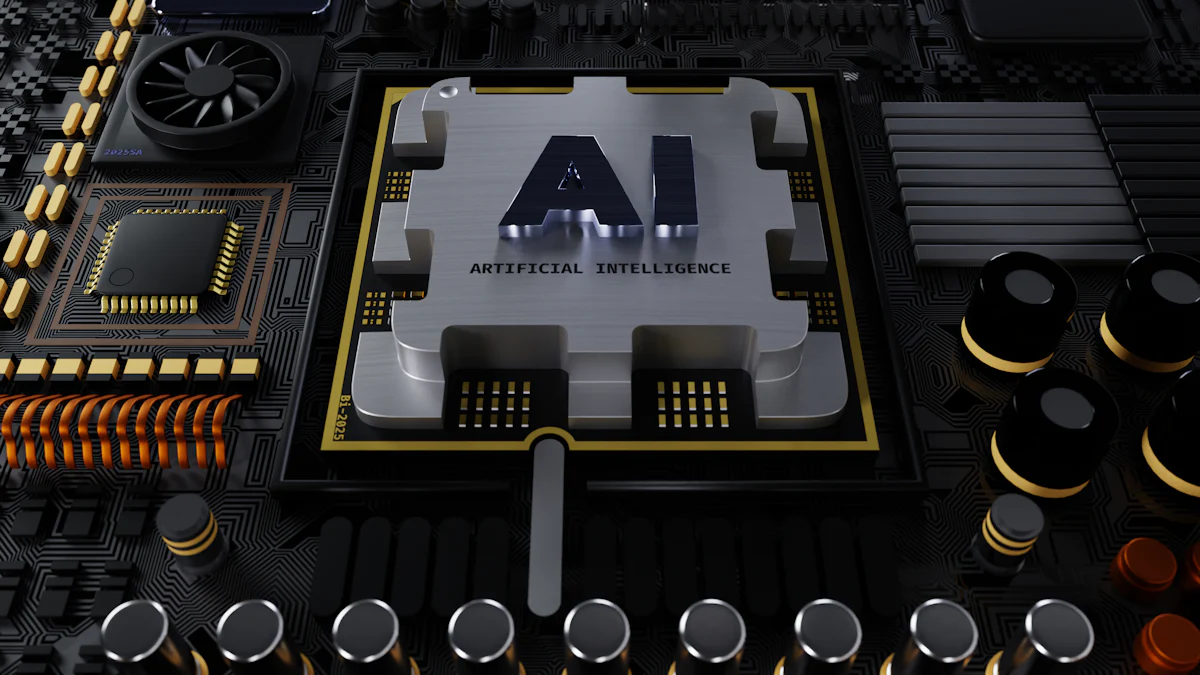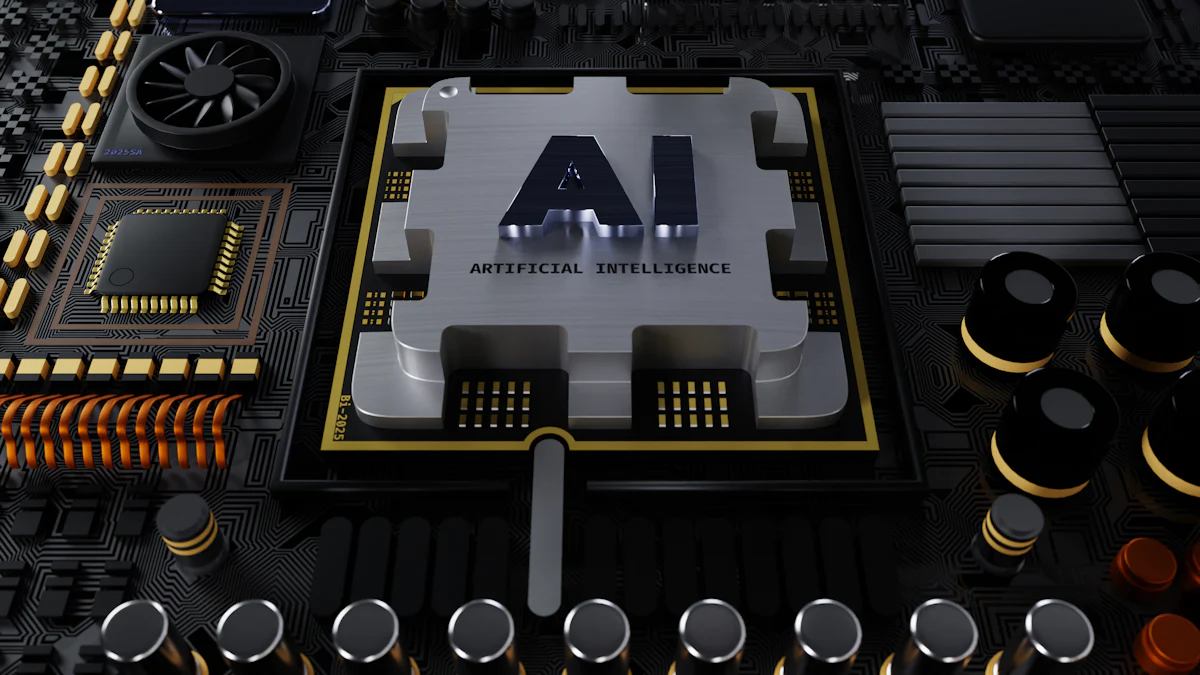Semiconductor Industry Trends and Future Projections

The semiconductor industry plays a crucial role in the modern economy. Rapid advancements in semiconductor technology drive innovation across various sectors, including automotive, healthcare, and consumer electronics. These innovations enhance performance and efficiency, enabling new applications and services. The purpose of this blog is to explore current trends and future projections within the semiconductor industry.
Current Trends in the Semiconductor Industry

Technological Advancements
Miniaturization and Moore's Law
The semiconductor industry continues to push the boundaries of miniaturization. Moore's Law, which predicts the doubling of transistors on a chip approximately every two years, remains a guiding principle. Manufacturers invest heavily in research and development to create smaller, more powerful chips. This process requires advanced lithography techniques and significant capital expenditure. Challenges in miniaturization include maintaining performance and energy efficiency while reducing size. Despite these hurdles, the industry consistently achieves breakthroughs that drive technological progress.
Integration of AI and Machine Learning
The integration of artificial intelligence (AI) and machine learning (ML) has revolutionized the semiconductor industry. AI enhances chip design and development by optimizing energy efficiency and exploring new architectures. AI applications process data, learn from experiences, and improve functionality. Semiconductor firms adopting AI set new standards in chip production. AI-driven innovations accelerate yield ramp-up and decrease costs. The influence of AI extends to various use cases, including image processing and defect identification, making it indispensable for modern semiconductor manufacturing.
Market Dynamics
Supply Chain Challenges
Supply chain challenges significantly impact the semiconductor industry. The complexity of semiconductor manufacturing involves intricate logistics and precise coordination. High-value components require secure and efficient transportation. Global distribution networks must handle time-sensitive deliveries to maintain competitive advantages. Companies like JUSDA provide comprehensive supply chain solutions, enhancing efficiency and precision. Their end-to-end management and advanced technology integration offer real-time visibility and collaboration capabilities. These solutions address the industry's unique logistical needs, ensuring timely and secure delivery of semiconductor products.
Geopolitical Influences
Geopolitical influences shape the semiconductor industry's landscape. Trade restrictions and international relations affect the availability of raw materials and components. Countries invest in domestic semiconductor manufacturing to reduce dependency on foreign suppliers. Government initiatives, such as the CHIPS Act in the United States, aim to bolster local production capabilities. Geopolitical tensions can disrupt supply chains and impact market dynamics. Companies must navigate these complexities to sustain growth and innovation. Strategic planning and diversification of supply chains become crucial in mitigating geopolitical risks.
Emerging Applications
5G Technology
5G technology represents a significant opportunity for the semiconductor industry. The deployment of 5G networks requires advanced semiconductors to support higher data speeds and increased connectivity. Semiconductor manufacturers develop specialized chips to meet the demands of 5G infrastructure. These chips enhance network performance and enable new applications, such as autonomous vehicles and smart cities. The global rollout of 5G technology drives demand for innovative semiconductor solutions, positioning the industry for substantial growth.
Internet of Things (IoT)
The Internet of Things (IoT) continues to expand, creating new opportunities for the semiconductor industry. IoT devices rely on semiconductors for connectivity, data processing, and energy efficiency. The proliferation of IoT applications spans various sectors, including healthcare, agriculture, and manufacturing. Semiconductor companies develop low-power, high-performance chips to support IoT ecosystems. These advancements enable seamless communication between devices, enhancing functionality and user experience. The growing adoption of IoT technology underscores the critical role of semiconductors in driving digital transformation.
Future Projections for the Semiconductor Industry

Market Growth Forecasts
Revenue Projections
The semiconductor industry is poised for significant growth in the coming years. Various sources project global sales to range from $520 billion to $1,307 billion by 2024. The Semiconductor Industry Association (SIA) reports that global semiconductor industry sales reached $46.4 billion in April 2024, with a compound annual growth rate (CAGR) of 8.8% from 2023 to 2032. Analysts suggest an average revenue growth of 6% to 10% up to 2030, with some subsegments potentially growing by as much as 15%. The automotive segment is expected to triple in demand by 2030, driven by advancements in electric vehicles and autonomous driving technologies.
Regional Market Analysis
Regional markets show varying growth patterns. The United States aims to triple its semiconductor manufacturing capacity by 2032, supported by government initiatives like the CHIPS Act. Asia-Pacific remains a dominant player, with countries like China and South Korea investing heavily in semiconductor production. Europe also seeks to bolster its semiconductor capabilities through strategic investments and collaborations. The Indian semiconductor market is forecasted to surge to $100.2 billion by 2032, demonstrating a CAGR of 20.1%. These regional developments highlight the global race to enhance semiconductor manufacturing and reduce dependency on foreign suppliers.
Technological Innovations
Quantum Computing
Quantum computing represents a revolutionary leap for the semiconductor industry. Quantum computers use quantum bits or qubits, which can exist in multiple states simultaneously. This capability allows quantum computers to perform complex calculations at unprecedented speeds. Semiconductor companies are investing in research and development to create quantum chips that can harness this power. The integration of quantum computing could transform industries such as cryptography, material science, and artificial intelligence, driving new applications and services.
Advanced Packaging Technologies
Advanced packaging technologies are crucial for the future of the semiconductor industry. These technologies involve stacking and connecting multiple chips in a single package, enhancing performance and reducing power consumption. Techniques like 3D stacking and system-in-package (SiP) enable higher density and better thermal management. Semiconductor manufacturers are adopting these advanced packaging methods to meet the demands of emerging applications such as 5G, IoT, and AI. The continued evolution of packaging technologies will play a vital role in sustaining the industry's growth and innovation.
Industry Challenges and Opportunities
Sustainability and Environmental Impact
Sustainability presents both challenges and opportunities for the semiconductor industry. The manufacturing process involves significant energy consumption and generates hazardous waste. Companies are under pressure to adopt eco-friendly practices and reduce their carbon footprint. Innovations in materials and processes can help mitigate environmental impact. For example, the use of alternative materials like graphene and gallium nitride can enhance efficiency and reduce energy consumption. The industry's commitment to sustainability will be critical in addressing environmental concerns and meeting regulatory requirements.
Talent and Workforce Development
Talent and workforce development remain critical issues for the semiconductor industry. The rapid pace of technological advancements requires a skilled workforce capable of handling complex processes and innovations. Companies must invest in education and training programs to attract and retain talent. Collaboration with academic institutions can help bridge the skills gap and ensure a steady pipeline of qualified professionals. Workforce development initiatives will be essential for maintaining the industry's competitive edge and driving future growth.
Strategic Recommendations for Industry Stakeholders
Investment Strategies
R&D Investments
Investment in research and development (R&D) remains crucial for the semiconductor industry. Companies must allocate significant resources to innovate and stay competitive. Advanced lithography techniques and new materials require continuous exploration. R&D investments drive technological advancements, enabling the creation of smaller, more powerful chips. These innovations support emerging applications such as 5G and AI. Companies that prioritize R&D will lead the market and set industry standards.
Diversification of Supply Chains
Diversifying supply chains is essential for mitigating risks in the semiconductor industry. Geopolitical tensions and trade restrictions can disrupt the availability of raw materials. Companies should establish multiple sourcing options to ensure a steady supply. Diversified supply chains enhance resilience and reduce dependency on single suppliers. Strategic partnerships with global logistics providers like JUSDA can improve efficiency. These collaborations offer real-time visibility and secure transportation of high-value components. Diversification strategies will help companies navigate complex market dynamics.
Policy and Regulation
Government Initiatives
Government initiatives play a pivotal role in supporting the semiconductor industry. The CHIPS Act in the United States allocates $52 billion for chip manufacturing. This legislation provides incentives and tax credits for semiconductor companies. Such measures aim to bolster domestic production capabilities. Governments worldwide are investing in local semiconductor manufacturing to reduce foreign dependency. These initiatives create a favorable environment for growth and innovation. Companies should engage with policymakers to leverage these opportunities.
International Collaboration
International collaboration is vital for the semiconductor industry's success. Cross-border partnerships facilitate knowledge exchange and technological advancements. Collaborative efforts can address global challenges such as supply chain disruptions. Countries can work together to develop standardized regulations and best practices. International cooperation enhances the industry's ability to innovate and compete. Companies should actively participate in global forums and alliances. These collaborations will drive the semiconductor industry forward and ensure sustainable growth.
The semiconductor industry continues to evolve rapidly, driven by technological advancements and market dynamics. Key trends include miniaturization, AI integration, and the rise of 5G and IoT applications. Future projections indicate significant market growth, with innovations in quantum computing and advanced packaging technologies.
Staying informed and adaptable remains crucial for industry stakeholders. The rapid evolution of GenAI capabilities will transform roles and skills within the sector. As Gerry Murray, Research Director at IDC, noted, "Marketing leaders must prepare their staff for fundamental changes." Engaging with the content and sharing insights will help navigate these dynamic shifts.
See Also
Insider Tips for Semiconductor Industry Quality Control
Revealing How Technology Shapes Market Trends
5 Key Trends for Enhanced Future Supply Chain
